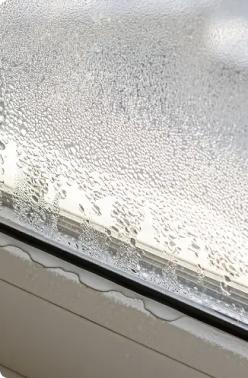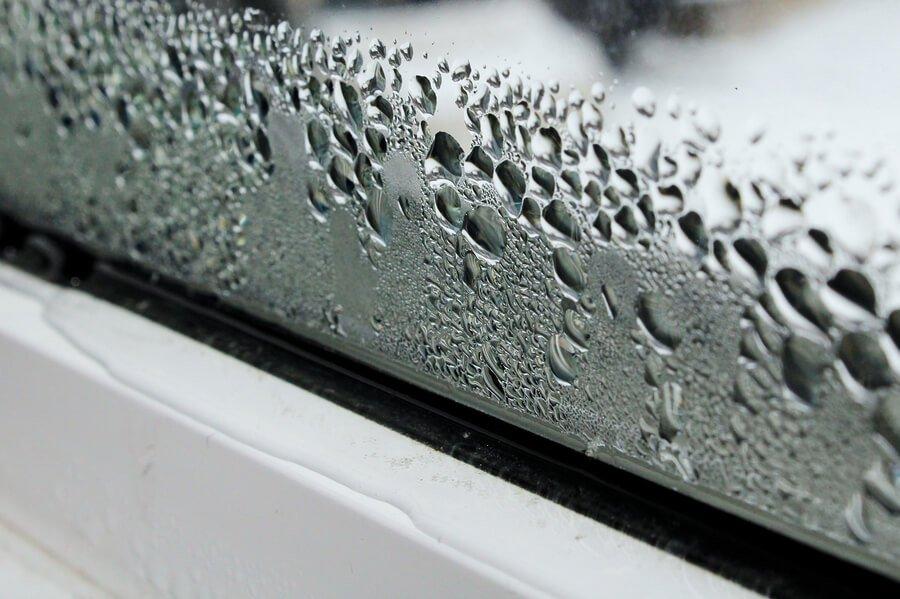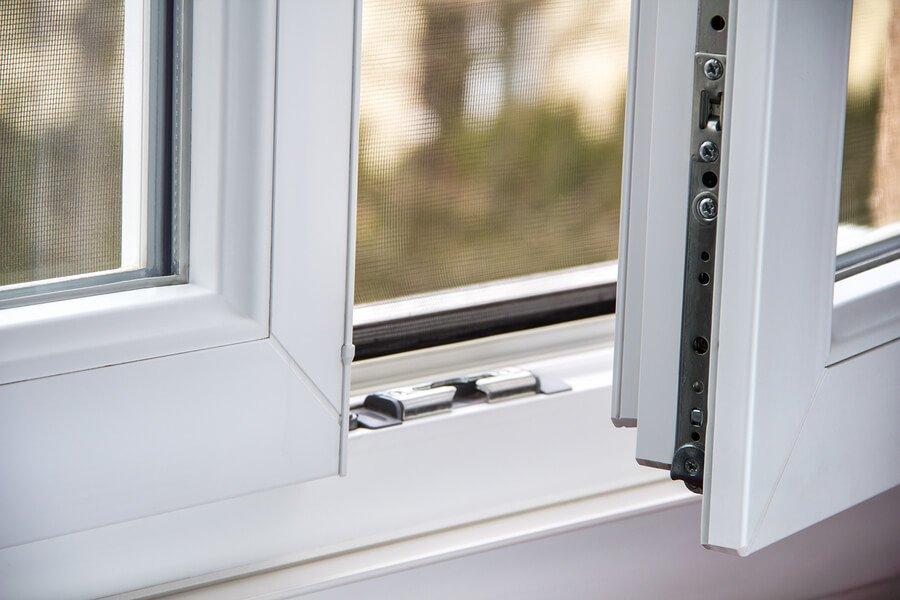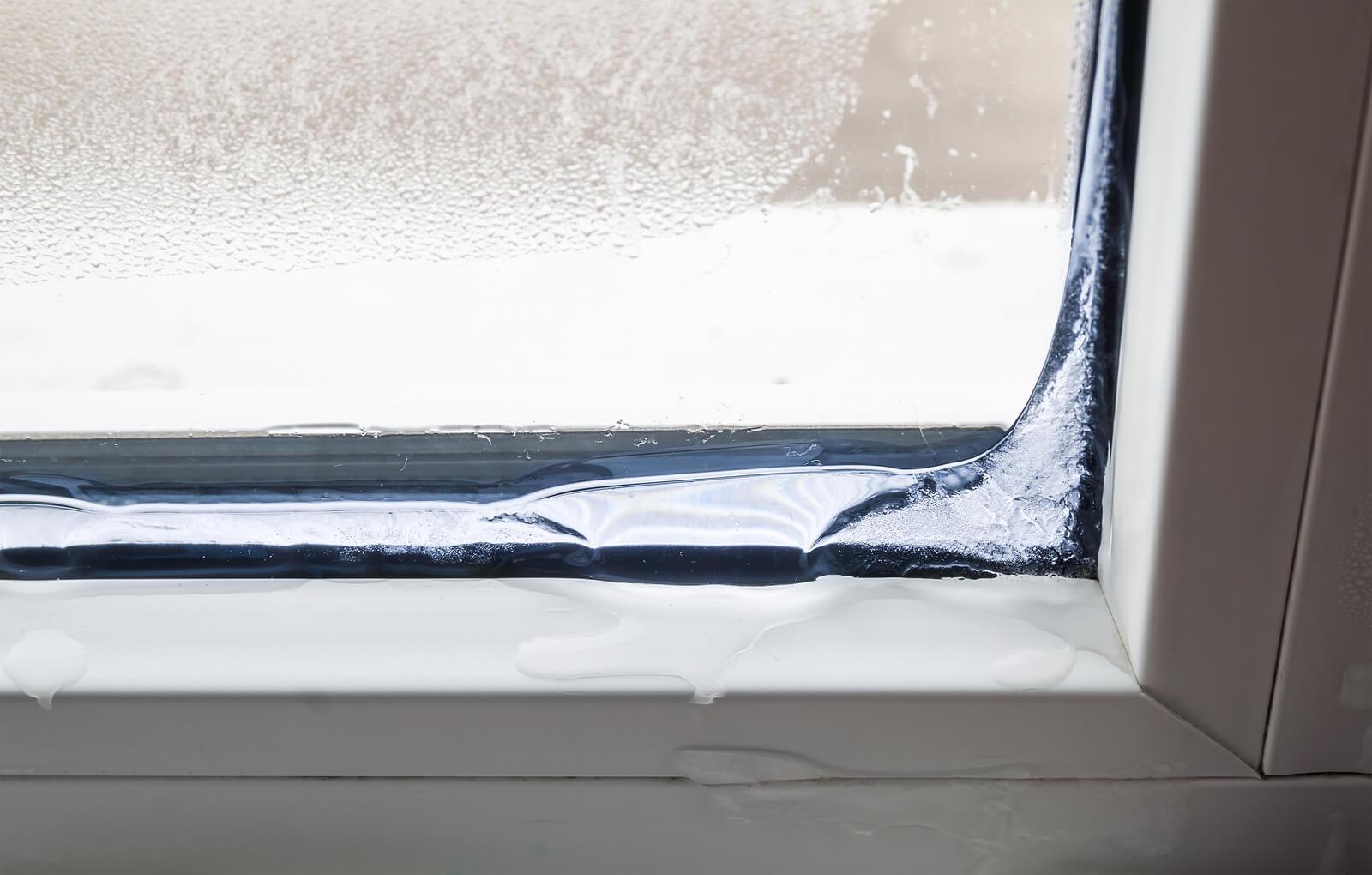

Ice On Inside of Windows: How To Stop Frost Buildup
Mar 25, 2025
11 min read
7255
Do you remember being a child during the winter months—longingly looking out the window at the fresh-fallen snow and playfully tracing a smiley face in the ice that had formed along the bottom of the window?
Canadian winters are hard on your house and especially hard on your windows. Your mom and dad may have assumed back then that ice build up on windows was a recurring cold weather problem that was something to be tolerated, but never resolved.
Luckily, window manufacturers have spent years uncovering the true causes of window ice buildup and have worked diligently to find solutions. As a homeowner yourself, you can now understand what causes window ice and can stop it before it causes major problems.
Take a look at the causes of ice buildup on the inside of windows, the potential impacts and concerns if not addressed, and the recommended methods for preventing frost on house windows:
Water Vapour/Condensation Cause Window Ice

Ice On Windows: How Does It Form?
Water vapour starts out as moisture in the air. During the summer months, when temperatures are hot, you’ll notice a heaviness to the air that makes you sticky and uncomfortable. In the winter months, when the temperatures drop outside and the windows are closed, the moisture is trapped inside your home and is drawn to the window pane.
When the surface temperature outside the window goes below the dew point, the water vapour changes from a gas to liquid. As the outside temperature of the glass gets colder and is then exposed to the warm moist air inside, it condenses on the window pane, freezes and forms ice crystals.
What can happen when you constantly have ice build up on windows?
Prolonged exposure to ice can cause both aesthetic and structural problems with your window finish and frame. As the frost melts, the liquid can sit along a wood window frame and discolour the polyurethane topcoat, crack the paint, rot the wood and potentially cause mold and mildew to grow.
Pro Tip:
Mold around windows?
Learn how to remove and prevent growing black mold on windows and window sills in this post
Window Mold Removal and Prevention
Single-pane windows are especially vulnerable to both frame and wall damage. Without a double- or triple-pane to capture excess moisture, water can run behind the wallboard, saturate the insulation and result in mold and mildew growth. You may not notice a problem until long after the mold has taken hold behind the drywall which would pose a serious health risk.

The Ultimate
Guide 2025
How To Combat Ice on Windows
Learn how to combat ice build-ups to save your windows and avoid health issues from Ecoline’s Expert Brochure
Download
How to stop ice build up on windows?
- Have gas appliances checked for improper or malfunctioning operation. Excessive water vapour and toxic contaminants can be pumped into the air through damaged equipment. While you’re checking, make sure to have a carbon monoxide alarm in your home. A typical lifetime for a carbon monoxide alarm is five to seven years. Models made after 2001 should have an end-of-life warning to alert you that it’s time to replace it.
- Check for and repair plumbing leaks. Even a slow-dripping faucet will add water vapour to the air.
- Avoid over-watering plants and group them in one room.
- Make sure to store firewood outside as moisture from the wood will naturally evaporate in the warmer temperatures.
- Refrain from air-drying clothes inside. If necessary, damp dry in a clothes dryer first to remove the majority of the water.
- Increase the room temperature at night to stop ice and frost from building up. You may need to use a space heater in a room that is problematic.
- Absorb excess condensation with a rolled up towel on the window sill at night. Keep the towel away from the glass to allow for sufficient air flow but will collect any water that forms on the glass. This will stop the liquid from freezing on the glass. Mop up any pooling water and replace with a fresh towel the next evening.
Humidity and Ice Buildup

What is humidity and what causes it?
Humidity is actually the measurement of water vapour in the air. While air can hold water or moisture in a gaseous state, the amount it can hold is reduced as the temperature goes down.
There are several causes for increased humidity in your home such as:
- Cooking and showering both create steam and add moisture to the air.
- Improper ventilation in a laundry room can cause humidity issues. Your dryer is designed to heat your clothes while they tumble to remove excess water. The steam created then passes through the dryer’s exhaust vent and is released outside. If the vent is not connected properly, increased humidity levels will form inside your home.
- Wrong setting for furnace humidifier. Cold, winter air is usually extremely dry—that’s why your hair becomes frizzy or your clothes are charged with static electricity. Many Canadian homeowners install a humidifier on their furnace to increase moisture in the air and make their home more comfortable. The typical comfort range is 30-50 percent but too much humidity can cause condensation and ice buildup on the windows.
What are the risks of excess humidity?
In addition to frost problems on windows, excess humidity in your home can damage painted and wallpapered surfaces, cause rotting and decay of wood windows, encourage mold and mildew growth with the potential for serious health risks, and reduce comfort levels with increased static build up and dry skin.
Did You Know?
Up to 20% of people in the world are allergic to mold.
How do I fix it?
Reducing humidity levels to stop window ice buildup in your home can be accomplished in a few ways:
- Adjust your humidifier based on the outside air temperature. Homeowners in areas like Manitoba, Alberta and Saskatchewan, that are accustomed to severe winter weather conditions, may be struggling to find the optimum humidity levels for their harsh temperatures. National Resources Canada has produced a chart to help identify the proper settings:Recommended Indoor Relative Humidity Levels
| Outside Air Temp (°C) | Maximum Indoor Relative Humidity At 20°C (68°F) |
| -30°C or below | 15% |
| -30°C to -24°C | 20% |
| -24°C to -18°C | 25% |
| -18°C to -12°C | 35% |
| -12°C to 0°C | 40% |
- Run a dehumidifier. Many newer homes are extremely air tight. This can cause an excess amount of humidity that can cause indoor ice to form. Just as you run a dehumidifier in the summer months to pull excess water vapour from the air (and get rid of that unpleasant musty odour), you can accomplish the same thing during the colder winter months. Purchase an inexpensive hygrometer to monitor the humidity level in your home to reach the optimum recommended percentages.
- Install a mechanical heat recovery ventilator (HRV) system. This will bring in fresh air for a designated time period and then recirculate the inside air. You may need to adjust the settings if you are getting condensation buildup.
- Run exhaust fans in the kitchen and bathrooms during cooking and showering. You can also open windows on milder days to improve ventilation.
- Make sure all exhaust vents (including the clothes dryer and gas burners) are working properly. Bath fans should vent to the outside, not just into the attic.
Air Leakage and Window Ice

As you know, windows are designed to protect your home from cold, outside air temperatures during the winter months. Leaky windows will allow surface temperatures to decrease, form condensation, and create ice. Check other common areas of your home’s vulnerability if you wonder ‘Why my electricity bill so high?‘.
How Does This Happen?
- Old, worn-out or damaged windows. Broken glass panes, lost seals can allow cold, outside air to penetrate inside plus let warm air escape (resulting in higher heating bills.)
- Poor or no insulation around window frames. No insulation around electrical outlets. Put your hand up to these areas on a windy day. Can you feel cold air blowing in? If so, you’ve got air leakage.
- Improper window installation. Loose fitting frames that are not square to the opening or properly affixed will allow air leakage.
- Worn or lack of weatherstripping. Drafts can occur when operable sash don’t have proper seals. This will lower the temperature of the glass and lead to window frost.
What Problems Can This Cause?
With prolonged exposure to the elements through air leaks, you can expect long-term damage to your windows. Water and ice can form causing warping, swelling, shrinking and discolouration. This can also lead to glass cracks and more air leakage.
On top of these problems, you’ll likely raise the thermostat temperature to counteract the drafty conditions inside your home. This will add to your energy bill and still not solve the problem.
How Can You Correct the Problem?
- Inexpensive foam gaskets are available to stop cold air from leaking in through electrical outlets and switch plates, especially on outside walls near windows. Gasket kits are pre-cut to fit snuggly around electrical wiring boxes and behind switch plates so installation is quick and easy. Many kits also include a foam-backed plug to prevent air leaks through unused outlets.
- Use caulking to seal small window leaks and fill larger gaps around windows and baseboards with foam sealant.
- Consider replacing your windows with high-performance, Energy Star certified windows. Replace aluminum windows with wood or vinyl frames and sashes. Both wood and vinyl have natural insulating qualities that can help reduce condensation. You can also replace single-pane windows with double- or triple-pane units that will provide adequate thermo-insulation in harsh climates.
- Include new window technology like argon gas or Low-Emissive (Low-E) coatings to insulate your windows against heat loss and air leaks.
Prevent Frost on Inside of House Windows
To stop window ice buildup before it causes major problem you’ll need to identify what is causing the issue. Do you have too much water vapour or condensation? Is the humidity level too high? Are your windows or other areas of your home causing air leaks?
Don’t take chances with your health, comfort or budget; address the ice buildup issues now to create the best living environment for you and your family.
F.A.Q
How to stop ice build-up on windows?
Reduce the humidity levels inside your home to prevent ice build-up on windows. Use a dehumidifier and ensure proper ventilation by running exhaust fans in kitchens and bathrooms. Seal any air leaks around windows and doors to prevent cold air from entering. Maintaining a warmer indoor temperature at night can also help reduce ice formation.
Why does ice form on the inside of windows?
Ice forms on the inside of windows due to condensation. When warm, moist air inside your home comes into contact with the cold glass of the window, the moisture condenses and freezes. High humidity levels, poor ventilation, and air leaks can exacerbate this issue, leading to ice build-up on the window panes.
How to prevent frost on the inside of house windows?
Control indoor humidity to prevent frost on the inside of house windows. A hygrometer should be used to monitor humidity levels, with an aim of 25-40%. Ensure proper ventilation in high-moisture areas like kitchens and bathrooms. Sealing any air leaks around windows and doors can also help prevent frost formation. If you still notice moisture or ice build-ups, immediately contact the window replacement specialist to consult on how to repair your windows. Constant ice build-ups and condensation can lead to severe health issues.
1750 Coast Meridian Rd #102,
Port Coquitlam, BC V3C 6R8
100, 17866 106A Avenue,
Edmonton, AB, Canada,
T5S 1V3
3307 Dunmore Rd SE #12,
Medicine Hat, AB,
Canada, T1B 3R2
2081 Merivale Rd #201, Ottawa, ON, Canada, K2G 1G9
by appointment only
109 Ilsley Ave Unit #3, Dartmouth,
NS, Canada, B3B 1S8











